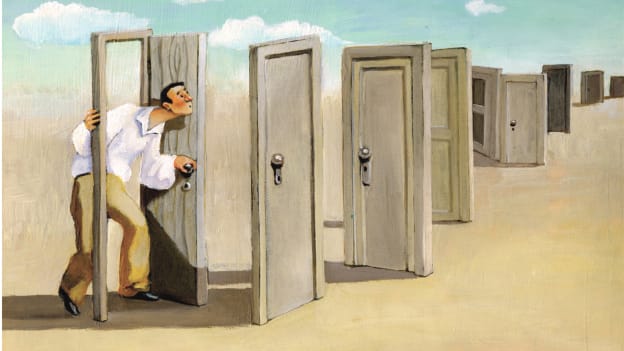Curiosity begins at home

At 4 years, Alice is the music prodigy in the school, she’s a spontaneous reciter of mathematical tables, she can solve an arithmetic problem that many ahead of her age would stumble and she is a remarkably ardent bicyclist in the colony. It’s easy to fall into the trap of thinking that Alice is gifted or she’s what her parents wanted her to be. But the truth is, as children, we are all born curious. We have active imaginations and our desire to explore is powerful. Thank the education system for being a spoilsport where the focus is to pass a test — not to learn; to acquire knowledge instead of nurturing a learning mind. If we could tap into our inner child just a little more, we would learn better and faster. And re-learning these lessons from children is an aide-mémoire that we had these abilities but at some point in our lives, we let them fall by the wayside.
We definitely get more opportunities for curiosity to flourish where we work. Isn’t it? We all know how technology continues to reshape our notions of work and trust me, it will endure for years to come. Skills that are relevant today may be obsolete five or ten years from now. Maybe even less. So when the demand in new skills is as fast as the extinction of some others, employability is less about what you know and more about what you want to know. And therefore, there is not a better time than this to adapt ̶ to this new game of learnability ̶ which demands us to quickly learn, develop and hone new, in-demand skills crucial to long term success. Or we’ll perish. According to Research, up to 65% of the jobs Generation Z will perform in the future don’t even exist yet and up to 45% of the activities people are paid to perform today could be automated using current technology. This won’t necessarily mean fewer jobs, but new jobs requiring different skills. So, where the rules are changing fast, learnability is becoming not just relevant and critical but a new norm which is all about ̶ learning skills, unlearning and relearning new ones ̶ at speed.
With unbridled curiosity, Alice became friends with the pedals and handles of her tricycle and soon, she learnt how to ride it well, pretty well. But by this time, the world had moved on from tricycle to a bicycle. Alice, being an enthusiast, picked her paddling skills from the past but unlearnt old skills of balancing on three wheels. She then relearnt the art of straddling comfortably, both feet flat on the ground and balancing a perfect bicycle.
Comparably enough, our lives as IT professionals is also taking a u-turn. A web developer is now transforming into a full stack engineer, who needs to be well versed with hardware, operating system, database, applications, user interface, design, and mobile applications. A talent professional is ready to take on the broader role of a full stack HR professional looking at everything from attracting, to developing, to retaining talent. These shifts are big, but bring us at an interesting tradeoff between depth (specialization) and breadth (perspective), demanding a broad base with multiple expertise areas.
Now the million dollar discussion is on how individuals need to increase their learnability quotient to stay relevant in the future, and how enterprises can lead the way to a continuous learning culture.
On the other hand, we understand that learning doesn’t happen in vacuum. A company’s leadership has to walk the talk and make learning an overall part of the strategic plan. Amid ongoing change, an enterprise must march forward to:
Set the tone during onboarding by giving new hires a lot of opportunities to learn and share with one another, in their first 90 days. Brand yourself from the very beginning as a company that supports learning.
Fill the workday with learning time and digitally supported experiences in the form of videos/Ted Talks/ Podcast at desk, and instructor led workshops. Both leaders and managers need to approve time for learning.
Set the example by reserving time for your own learning. For example, you could invite your team to attend a webinar with you or organize a “brown-bag” lunch hour learning session, or simply share a video on a topic relevant to something the team is working on currently.
Facilitate mentorships and consultations to help create a mindset that is open to growth, to learning. In the groundbreaking research on the impact of mindset on learning, it is proved that people with a growth mindset see coaching as an opportunity to develop and improve. Tap it head on.
Recognize continuous learning for individuals who’ve spent time and effort in learning new skills. Recognition reinforces the behavior you want to see in your employees—not to mention that it makes them feel good! When they feel better about themselves, they will feel better about your company.
With the drive to meet customer needs more deeply and rapidly, both enterprises and individuals have to offer the ultimate competitive advantage. Solving it will enable organizations to rapidly adapt, innovate, and even lead disruption. If experts are to be believed, learnability is going to be the differentiator between an enterprise thriving or disappearing. So, as a leader, your job doesn’t end at building a high performing team, you have to successfully feed those learnability cravings and keep the virtuous cycle turning. And all this can happen, when the minds are curious— alike our 4-year old Alice who ventures out and doesn’t fear the unknown to stay safely ensconced in her comfort zone.
















